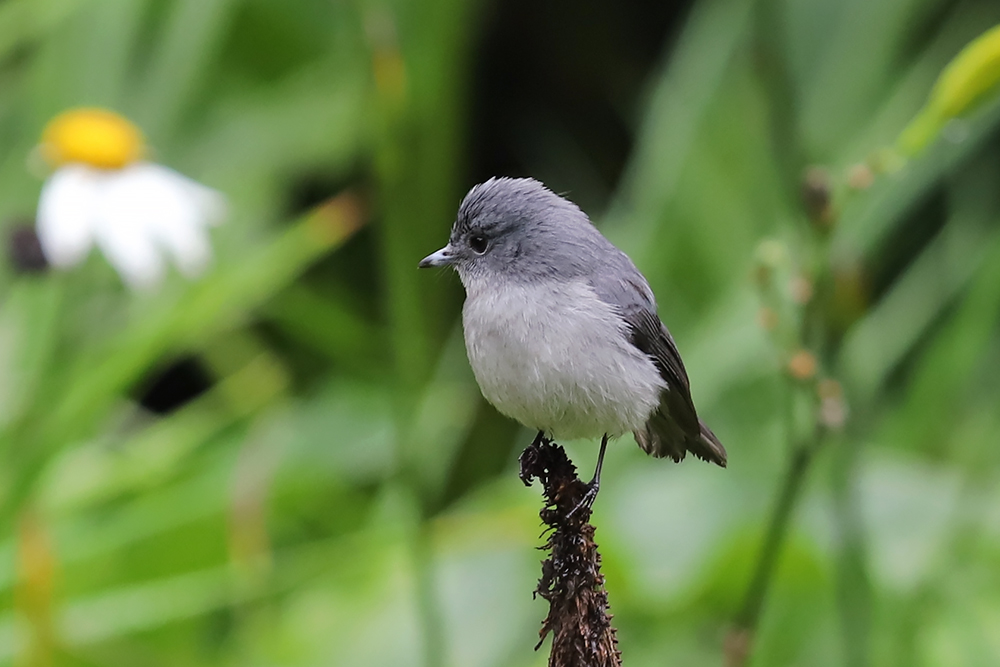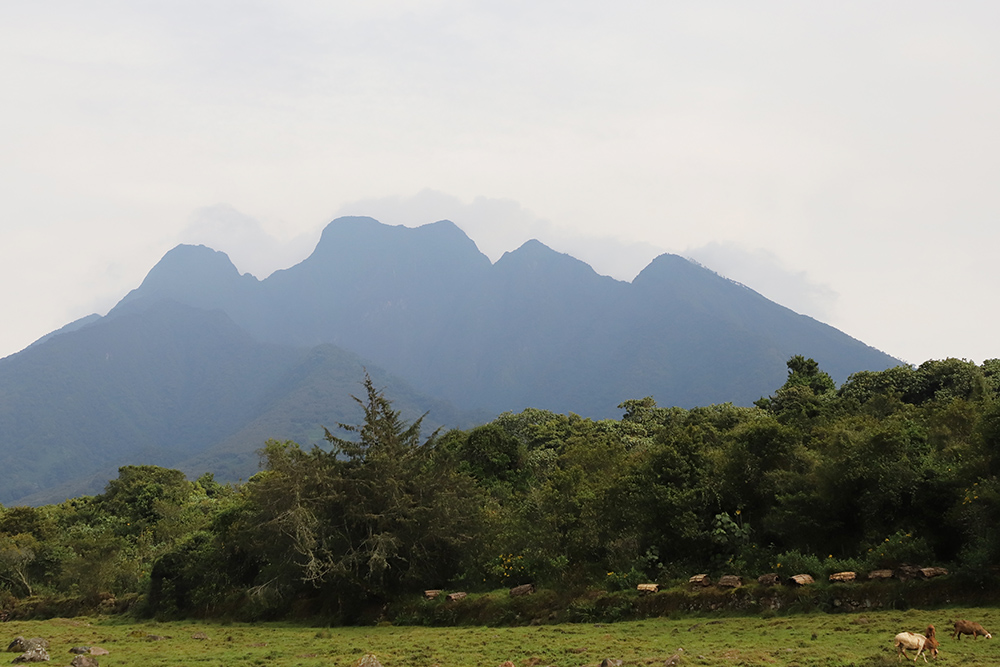I went to Rwanda in 2022 to see the mountain gorillas, who I expected to write about in Living on Earth. It was a short visit, less than a week, but the country made a strong positive impression on me. I decided to write something about it, and began doing background reading. Rwanda has been in the news quite a lot over the last few years, first due to the former UK government’s plan to send asylum seekers there, now because of the outbreak of Marburg virus. The UK controversy was accompanied by brief summaries, usually negative, of Rwanda’s social and political scene (see the notes below). For a while I tried to work out my own view of the political situation, but never did so very well. I’ve decided to just reprint parts of some emails I sent back to friends during my visit. These are my impressions of day-to-day life in the area near the gorilla refuge, and also around the capital, Kigali. Obviously my knowledge of the place is very shallow, but we did a lot of slow driving through villages and small towns, and I must have seen tens of thousands of people. The impression I had of everyday life was so consistent that I do trust it to some extent.
I spent an afternoon in the Kigali Genocide Memorial, which documents the 1994 genocide in great detail. That is an awe-inspiring place, as well as an intensely disturbing one. But what I want to focus on is the everyday scenes.
The photos in this post are all from the trip, mostly from the gardens around our lodge. I did not take any street photos.
The text below is mostly from emails I sent back during the trip, except where indicated. I’ve edited some passages a little. By the end of the post, it’s more of a mixture of emails and later thoughts.
First email:
Rwanda is an inspiring place. They went through absolute hell, and came out of it one of the most functional-looking and community-minded places I have ever seen. There are things like the fact that on the last Saturday of every month, everyone (the whole country) comes out to clean up any trash in the streets. As a result, the place is spotless. So spotless that our driver said that on many last-Saturdays, people use the time to chat in the street about plans and priorities, and so on.
In some countries, the streets are full of collections of young men with nothing to do and looking a bit dangerous. I must have seen 10,000 or more people on the street over the last few days (a lot of driving) and the number of notably menacing young men I have seen is two.
I have seen exactly two drunk people, also, and that is not because of any sort of prohibition on alcohol (lots of beer advertisements, and there is also banana beer in the villages).
The genocide museum in Kigali is extremely impressive. It is very, very detailed. The genocide was, if anything, even crueller than I realized (more purely gratuitous violence). The museum does not hold back in any way.
It seems that this is a country where the 1994 horrors led to a lot of reflection on tribalism and group identity, and a lot of self-conscious community building. At least to a casual visitor, the results are inspiring.
From other emails:
As well as these street-level matters, a lot people have spoken about the education system, which has a self-conscious and intelligent attitude to the post-genocide situation. [Adding to the emails: One of our drivers said that in a schoolyard soccer game, if one of the kids insults another using any sort of tribal reference or stereotype, in either direction, then the soccer game is over and they are off to the school principal to talk through why this is such a bad mistake.]
I asked about Covid lockdowns, and the driver said that the government was proactive in getting supplies to people who work in the informal economy (etc.) and might slip through the cracks. The health system sounds good: a sort of ‘free for the basics; not free once you get past that’ system that has been impossibly controversial for the US.
[More accurately: free emergency, then a quota of N dollars (francs) for other basic services, and after that you start paying. I might have this slightly wrong, as it was a 1-minute conversation. A 2012 New York Times article and also Wikipedia describe the details differently, but still in very positive terms.]
In an informal street-observation setting, there does not seem to be a big difference between the roles of the sexes. Young women walk along the road between villages alone (in daytime anyway). Women carry a lot of stuff, but so do the men. (Women carrying baskets on their heads; men pushing unbelievably overloaded bicycles piled high with sacks and containers.) It does not look like an idle-men and overworked-women society. I wanted to check with one of our drivers before writing about this, but he confirmed it: said there is not really much difference between the roles.
More in the countryside but also driving through Kigali, one does also pick up on a degree of consistent modesty. I did not see a single short skirt. Lots of beautiful and intensely colorful dresses (so not an oppressive modesty, it seems) but nothing short by Western standards. And I saw only one t-shirt on a young man that had a gangster sort of vibe.
I wondered at the time whether this might be a society where religiosity has a positive role. It is all over, but not overbearing (no billboards talking about hell). The breakdown is roughly 65% catholic, 5% muslim, and significant numbers of groups like the 7th Day Adventists and Jehovah’s Witnesses who are more marginal in places like Europe and the US. A friend objected by email: this religious set-up was in place before 1994, too, and presumably did not help then. A good objection.
The area where we were staying was a 7th Day Adventist area. My impression of the place might reflect the specifics there, to some extent. On the other hand, today we went past the Kigali central bus station (for the second time). Thousands of people, and a fair bit of chaos, but an atmosphere that seemed far better than, for example, the Port Authority Bus Terminal in Manhattan, and other places of that kind.
Regarding the genocide, I wrote: I am in awe of their evident ability to forgive and move on.
A friend objected, emphasizing the need for accountability, and even retribution. In reply:
They didn’t just drop it. The murderers were prosecuted through a mix of normal courts and a truth-and-reconciliation process. If you admitted your crimes, you got a 50% sentence and/or (I can’t remember how it all works) you spend a lot of it doing community service. If you didn’t admit it, or lied, you went to prison. Some people are still in prison now. A driver told a story about a man who came along to one of the meetings and made some contrition statements as expected, but left out a particular crime — torturing and killing a guy. The man’s son was in the audience (all this stuff was public) and when his father’s death was omitted, he got up and accused the man. The culprit ended up back in prison — his repentance did not count as real. (Our driver that said he was present at this event.)
The thought, I take it, is that if you don’t let things go at some stage, the tit-for-tat cycle will never end and the country will collapse. It is a small landlocked country surrounded by not-very-functional other countries (especially D. R. Congo – everyone seems to regard that place as extremely dangerous). You have to move on. But if you don’t hold people accountable at all, it’s impossible to move on.
As I write this, I am amazed again at how well they seem to have handled the balance.
________________
Other notes:
My Kenya-Rwanda trip was done through Terra Incognita Ecotours, who I do recommend. (I paid my own way, with no discounts.) We stayed here.
One of the media discussions that prompted my writing this (though it was a while back, last year) was a “Late Night Live” radio discussion of the UK refugee plan, in which Ian Dunt, a fairly prominent progressive commentator in the UK, condemned the UK plan by talking of refugees who “arrived here thinking it was the kind of place they could get safe haven, before being forcibly removed to an African dictatorship.”
From around the same time, here (NYT) is a very harsh account of the political situation. This one in the Guardian is better – more detailed, still very critical.
The passage about the 1994 genocide in the NYT one linked above is misleading enough to make me distrustful of the rest.
Rwanda’s 1994 genocide — during which nearly one million Rwandans, many of them ethnic Tutsis, were killed — was perpetrated under the noses of United Nations peacekeepers, who diligently filed reports on the killings while seemingly impotent to prevent them. Although Mr. Kagame’s former ambassador to the United States and other political allies have accused him of “sparking” Rwanda’s genocide and doing little to prevent it, he has cast himself as the hero who ended it.
“Many of them ethnic Tutsis” is a misleading formulation. The victims were ethnic Tutsis and some Hutu moderates who did not share the “Hutu Power” ideology. The passage that follows also seems misleading as there was nothing Kagame could have done to “prevent” what followed – a seizing of the moment by Hutu activists and militias. (The claim of “sparking” the genocide is a claim that Kagame was responsible for shooting down the former president’s plane.)
The Kagame regime does appear to be authoritarian in at least some ways. It has held many elections, but with the vastly lopsided official counts that are never believable. This article asks explicitly “Is Rwanda a dictatorship?” and links to others on the same theme. It does not directly answer the question. I am not sure where the boundaries of dictatorship are – I’d perhaps not think Rwanda counts, but there are certainly problems with elections and the handling of dissent. I do not want to defend the Kagame or the present government in this post; my aim is to give impressions of everyday life.
Marburg virus was discovered through, and takes it name from, a lab accident in Germany.
The colorful bird in two of the photos is, I think, a Double-Collared Sunbird. I am not sure about the grey one. It looks like a Mauritius Grey White-Eye, but they are supposed to live only in Mauritius. The landscape photo was taken looking up into the mountains where the gorillas live, Volcanoes National Park. The little structures that form a line where the forest starts are beehives.




